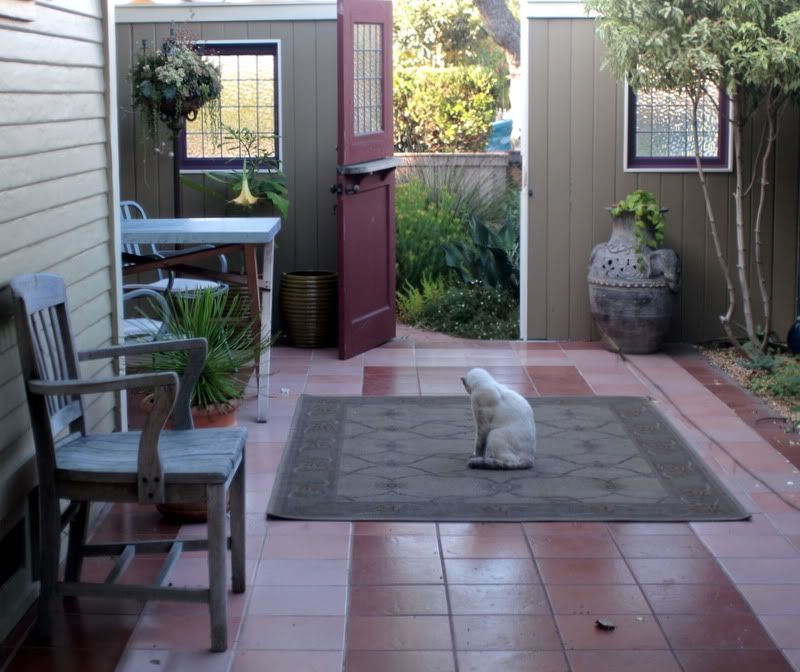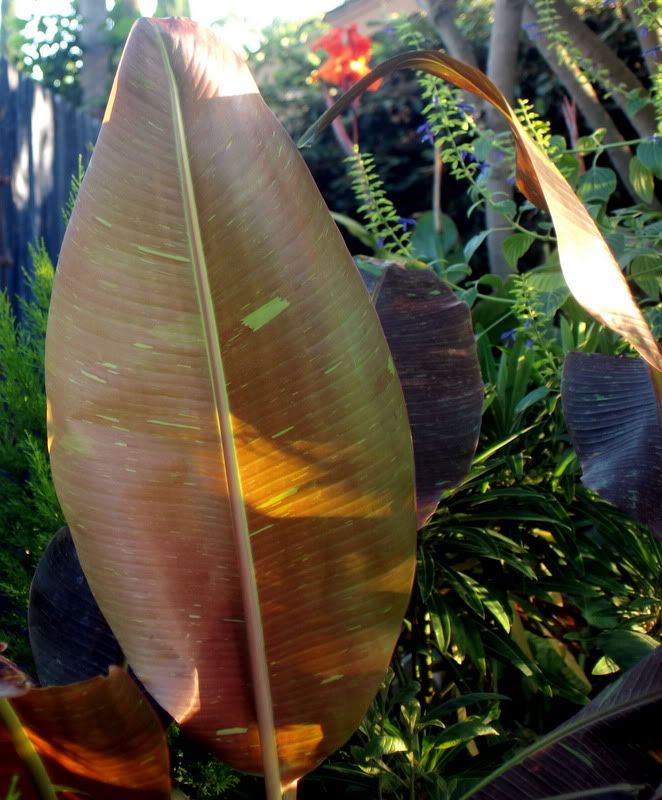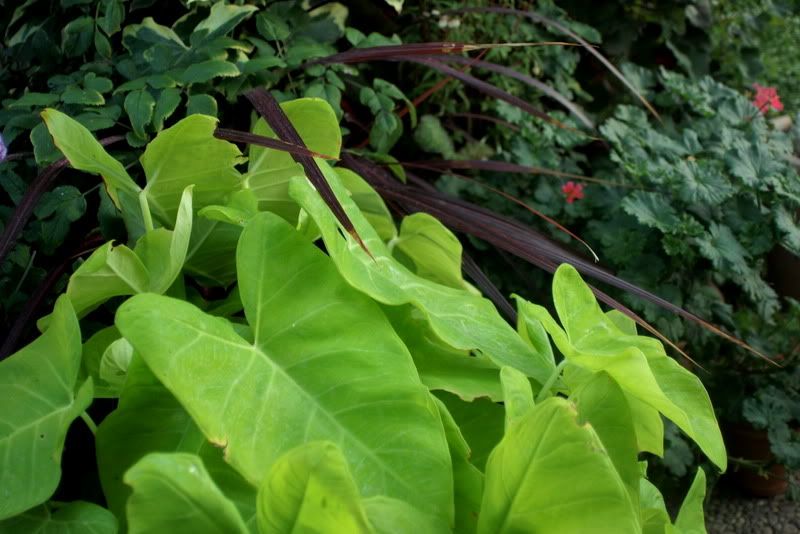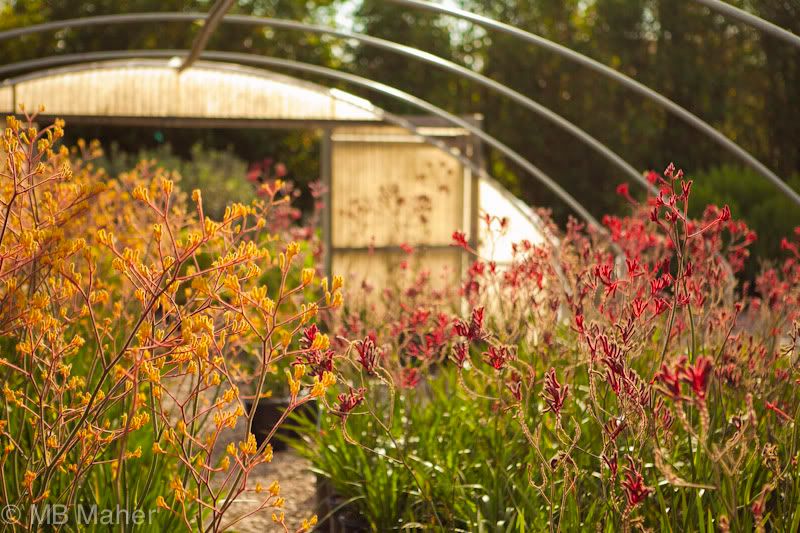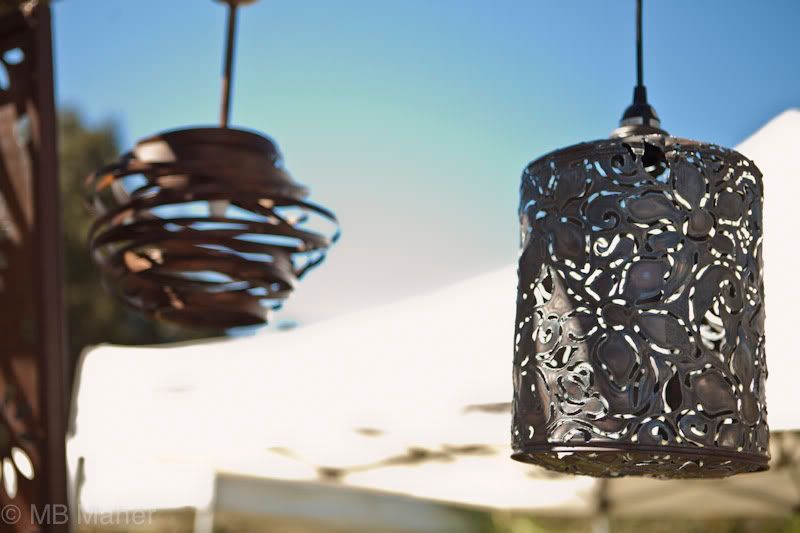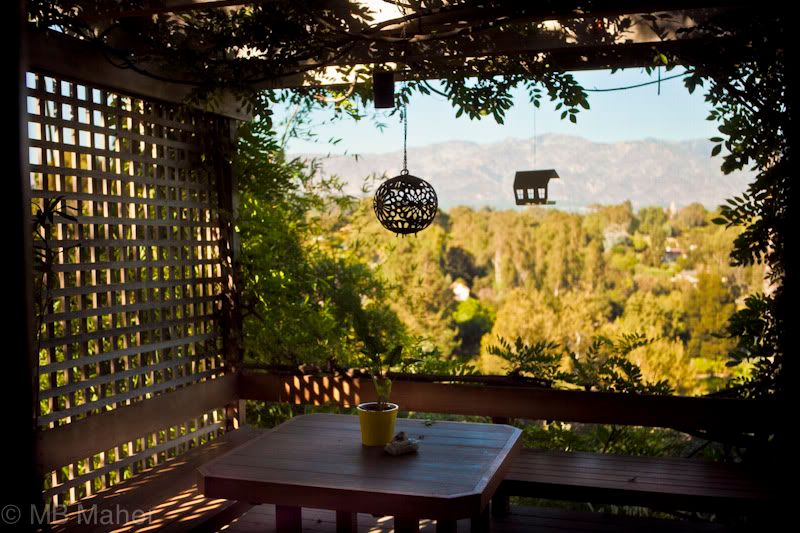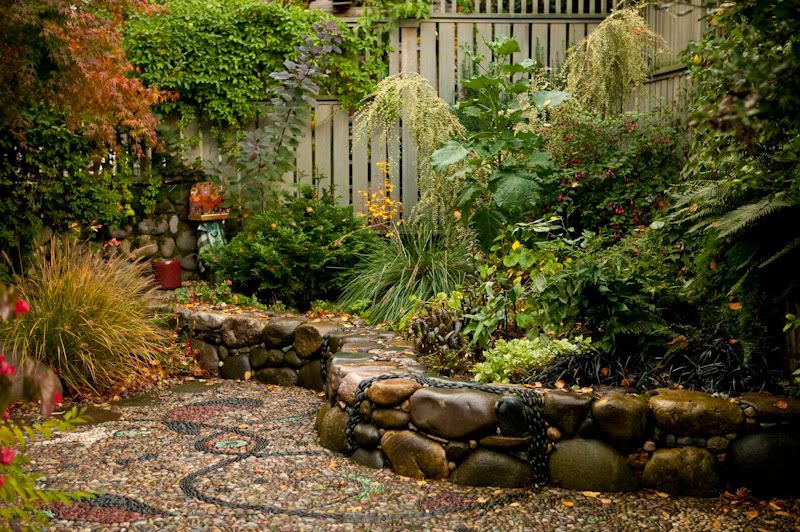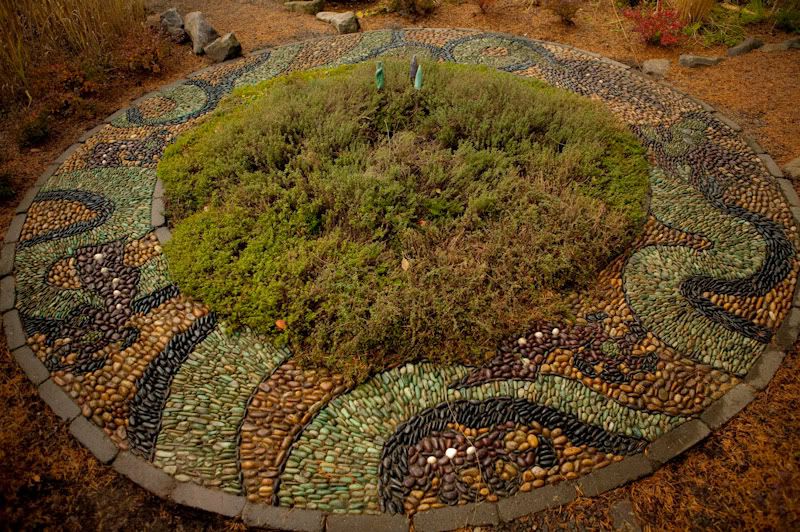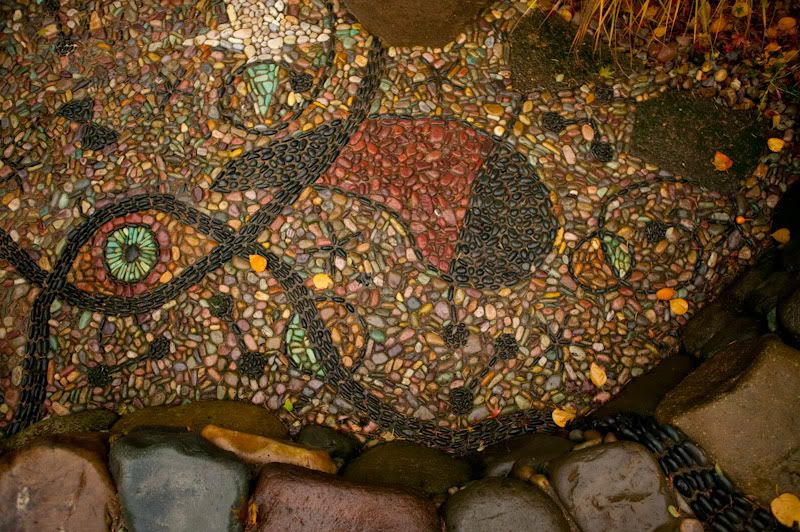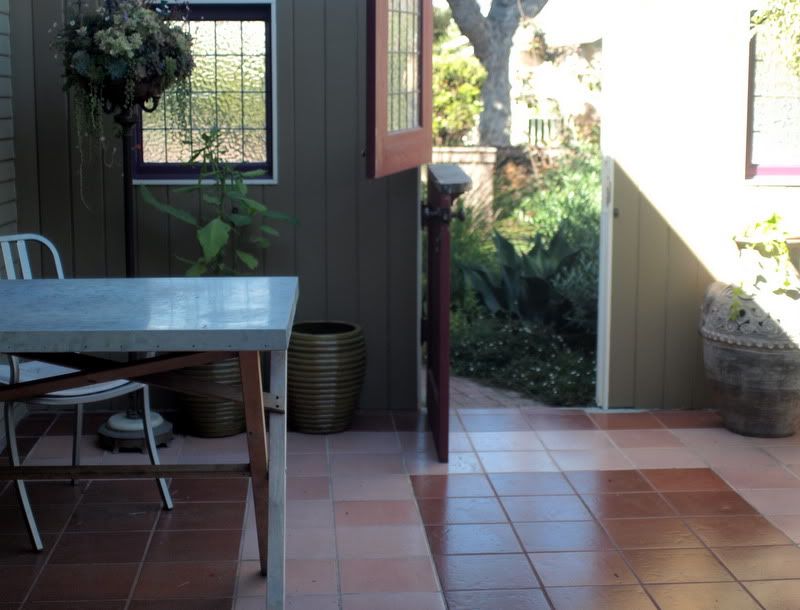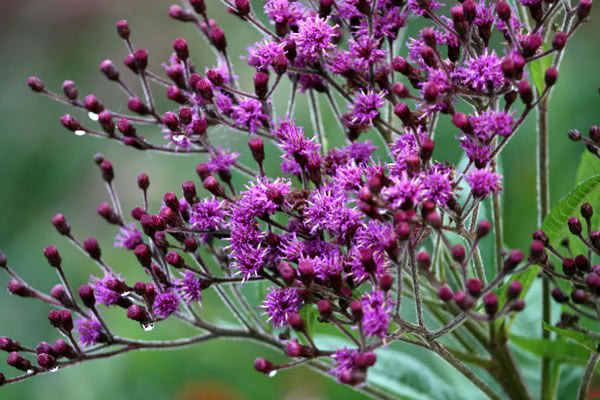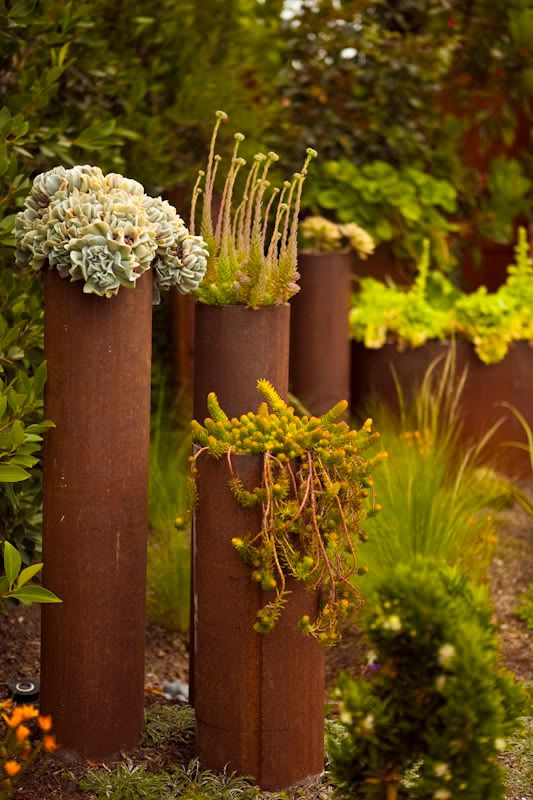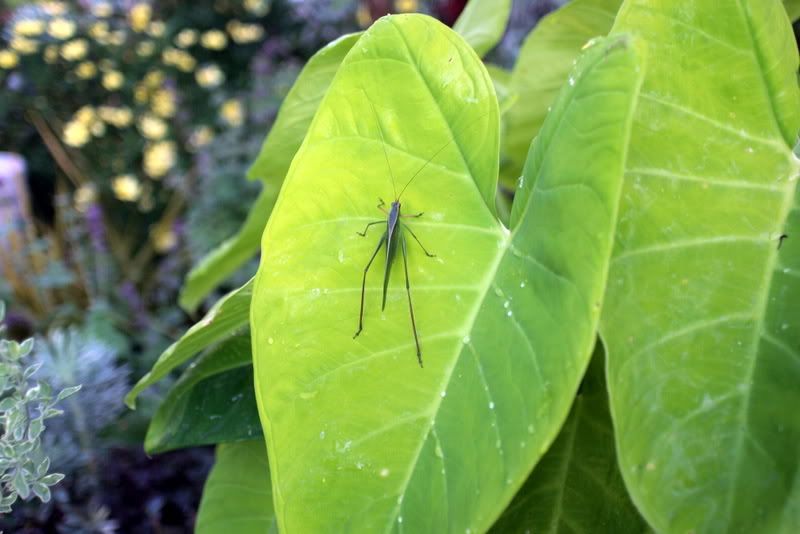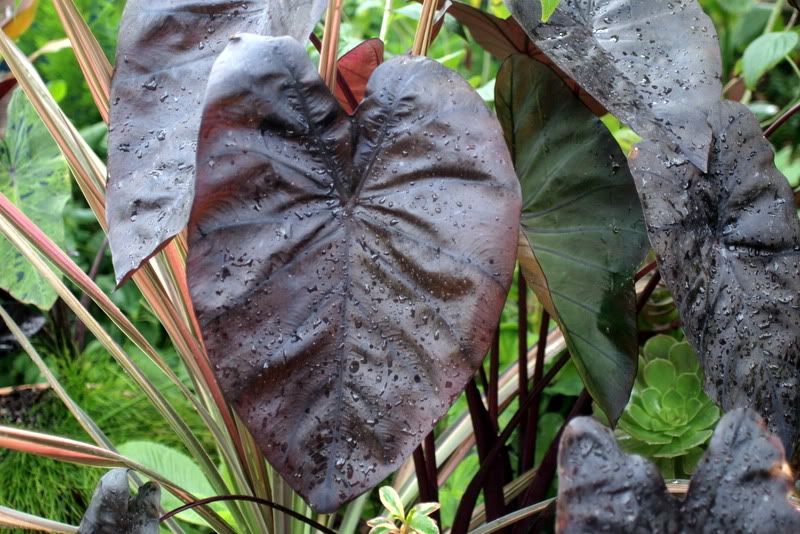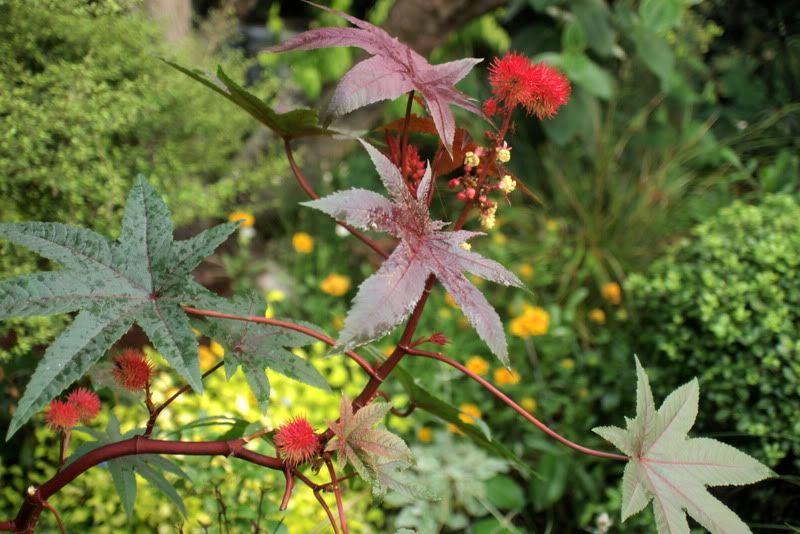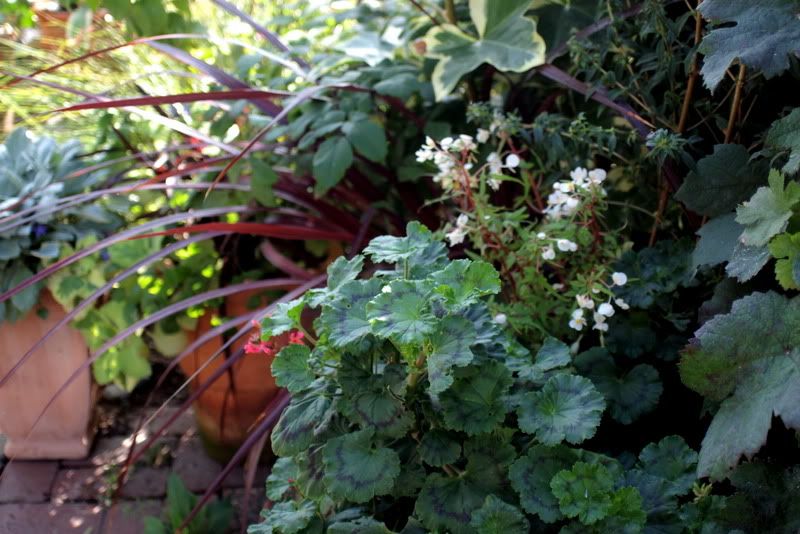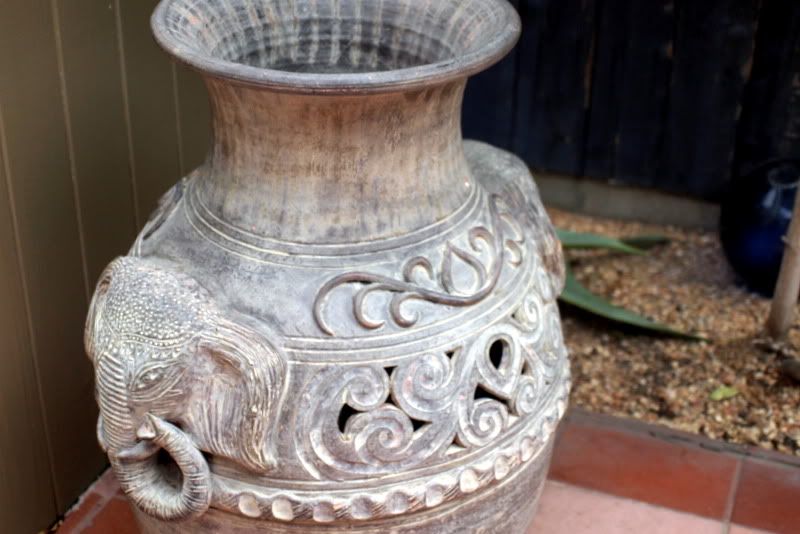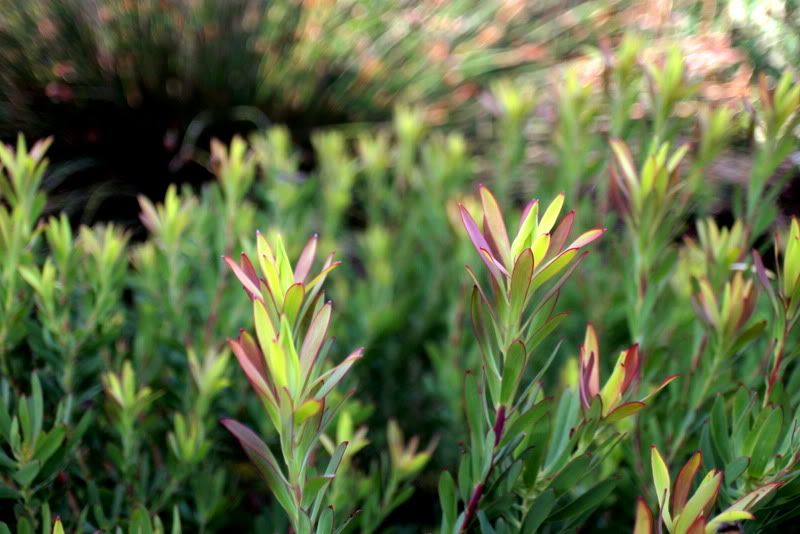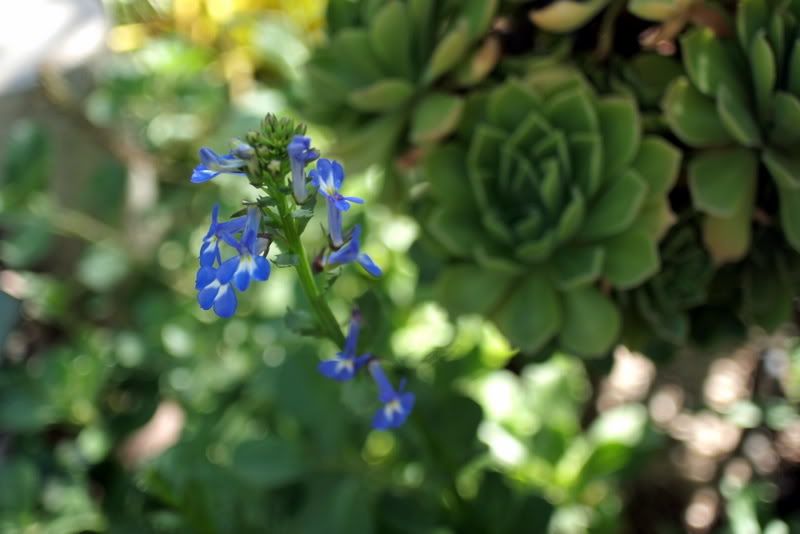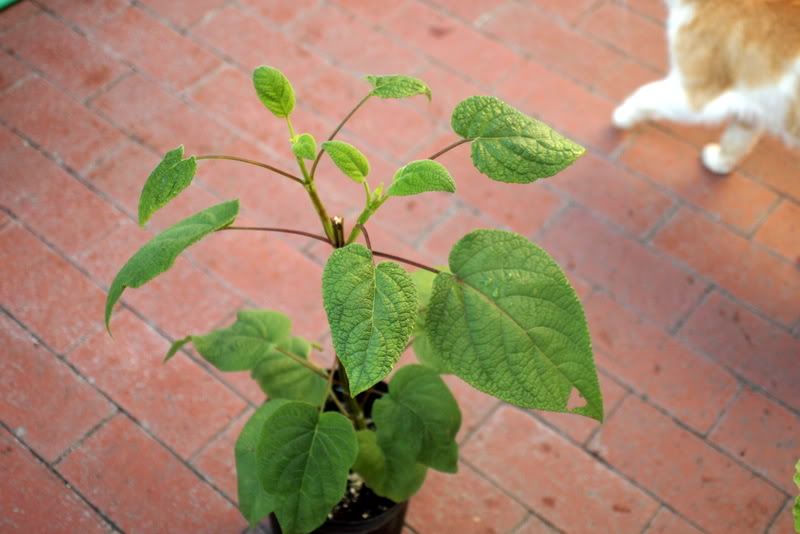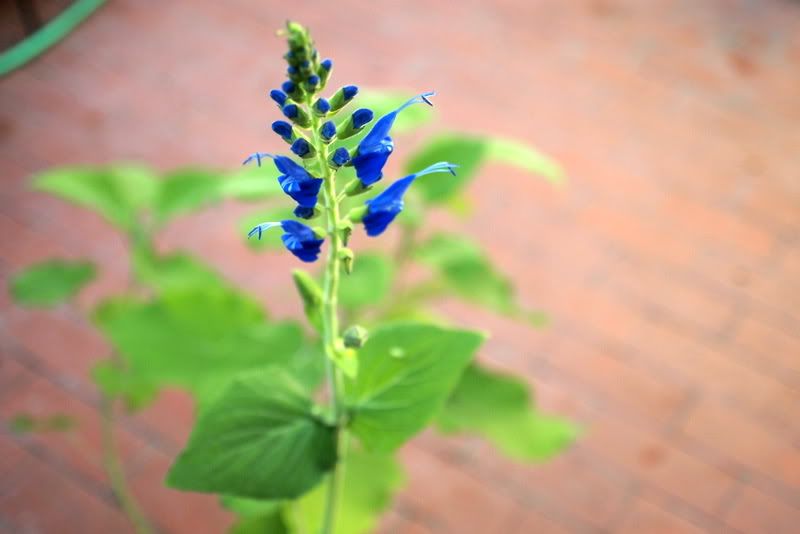You didn’t really expect we’d be discussing the latest Manolo Blahniks, did you?
Below is the transcribed conversation of a group of cyber garden pals on the topic of various approaches to overwintering tropicals. All but me garden in a zone colder than 7.
Deanne: So who stores all their Colocasias/alocasias dormant and who keeps them in the green? Curious minds and all that. I lost my ‘Hilo Beauty’ the last time I tried to keep it dormant over winter so think I’ll keep that one under lights this year. What about ‘Mojito’? That one looks like it might make it dormant???? Any thoughts?
Sue: The best success I’ve had is with them semi dormant — in the dark but slightly growing. I’ve also had a couple make it dormant, but that was just luck, I think. The heavier the leaf, the easier they seem to be to winter over.
Eden: I’ve always kept mine under lights and they’ve done great. This year I have too many that are too large to do that. I’m going the semi-dormant route with those. I’ve been doing a bit of research, and that seems to be the way most gardeners go with them. Doesn’t seem that very many have luck with letting them go totally dormant.
Drema: I keep mine under lights. Sometimes they get scraggly but perk up fairly quickly in the spring. I have had the ‘Hilo Beauty’ for three years, and it is under lights in the far corner, not really direct light. It does fade like the caladiums, then shows back up after being outside a while. I think I am going to be more diligent this year to see if I can keep it going. I am a little haphazard...
Saucydog: I overwintered ‘Illustris’ in its pot. It didn’t break dormancy until late June, though. Somewhere I saw a good article on the subject. I’ll see if I can find it.
This is the article I had bookmarked, but I’ll bet you’ve already seen this.
Deanne: Thanks for the input, everyone, and Saucy for that link. I was just curious as to whether you all kept them growing or tried dormant. I’ve had great luck with the big, green C. esculenta going totally dormant but none of the others. I’ve saved my ‘Illustris’ and ‘Yellow Splash’ by keeping them under the lights with only one or two leaves on them. I keep pruning the leaves off as they make new ones because these plants seem to be magnets for spider mites. Some sites say they can be dormant, but I talked with Steve Silk at M&L’s garden tour, and he said he keeps them dormant but in their original pots, not digging them out. I tried that with ‘Black Magic’ a couple years back and lost it, so I’m thinking I’m going to go the lights route and see how it goes. Sue, I’m interested to see how you winter over that Portadora….
Clemmie: I’m avid with interest but going to let you experts all figure it out — will be interesting to take a survey in the spring to see how they all do.
Saucydog: I’ve got an Alocasia “Borneo Giant” (at least that’s what I can tell from googling – I bought it from Mahoney’s without a tag) and I’m going to try to overwinter it as a houseplant – it’s 6 ft. tall! I’m thinking cool bright light.
That’s how I overwintered ‘Illustris,’ Deanne: kept it in it’s pot and just put it in the cool dark basement. When Nick carried all the pots out into the sunlight, I didn’t have a chance to get to that pot right away and I was surprised at what popped up.
Deanne: Holy cow, Saucy, that plant is giganticenormous! I found this on google when I wanted to see what it looked like:
“My experience of overwintering is that they are best kept going, as if they go dormant are more difficult to restart than Colocasia and take a full season to regain their original sized leaves. Keep above dormancy temperature at 5C plus keeping on the dry side. If the leaves show signs of wilting, water from the bottom, standing the pot in a shallow dish of water for a minute or two.”
Saucydog: It’s a pretty fabulous plant, competing for the banana’s spotlight. I think I read that same information, so I’m thinking I’ll try it in a sunny window in my bedroom (which is cooler than the rest of the house).
Deanne: So do you all cut off all the leaves even if you are going to keep them growing?
Saucydog: I’m going to do what I did with the smaller varieties of bananas – remove a few leaves, but other than that, just grow it as a houseplant. I had great success with M. ‘Cavendish’ and M. ‘Siam Ruby.’ It seems to me they have the same habits, so I’m going to try!
AGO/Denise: Can’t add much to this discussion among you experts at overwintering but will say that I let my ‘Lime Zinger’ xanthosoma go dormant, tip the pots on its side, no water all winter, but outdoors in shade. I don’t see this tropical much anymore — maybe it’s trouble to overwinter? It shared a pot with ‘Illustris,’ which has disappeared — just doesn’t return with the same treatment given the LZ. Wondering what to do now for my ‘Mojito’ too…
Deanne: Saucy, thanks for the input. Denise, I’m so jealous of your Lime Zinger! For some reason, I’ve killed one of that and two X. Chartreuse Giant. I think the Xanthosomas don’t want as much water as the Colocasias. I’ve wanted ‘Lime Zinger’ since I saw these stupendous specimens at Longwood Gardens several years ago. They were huge and gorgeous. Sue has one of her profile pics taken under one of those plants.
M: E. sent me some ‘Illustris’ a number of years ago. I’m pretty sure she let them go dormant in moist hamster bedding. I’ve kept them going under lights, but this year I have a couple of huge specimens that I potted up smaller pieces of and put the largest piece, dirt and all, in a trash bag with moist hamster bedding. Who knows what will happen? But it was worth a try.
Drema: I stored ‘Lime Zinger’ both ways, and the one that was kept in its pot under lights and watered regularly bounced back much faster than the one in the corner with minimal light and water. I still don’t have one that is as big as the ones we saw at Longwood, but I am not as diligent about water, food, etc. And I think they sort of grow to fit the size of pot they are in. I have noticed the same cultivar side by side grows bigger in bigger pots.
Deanne: Drema, I’m jealous you’ve kept ‘Lime Zinger’ alive! I’ve killed it and am going to give up on the Xanthosomas.
M: Looking forward to hearing the results of what you’re doing…

